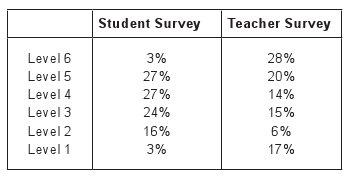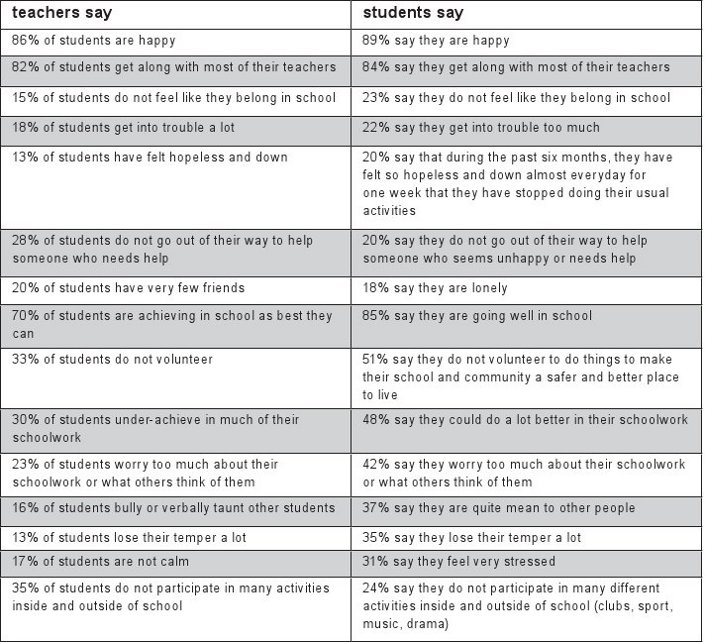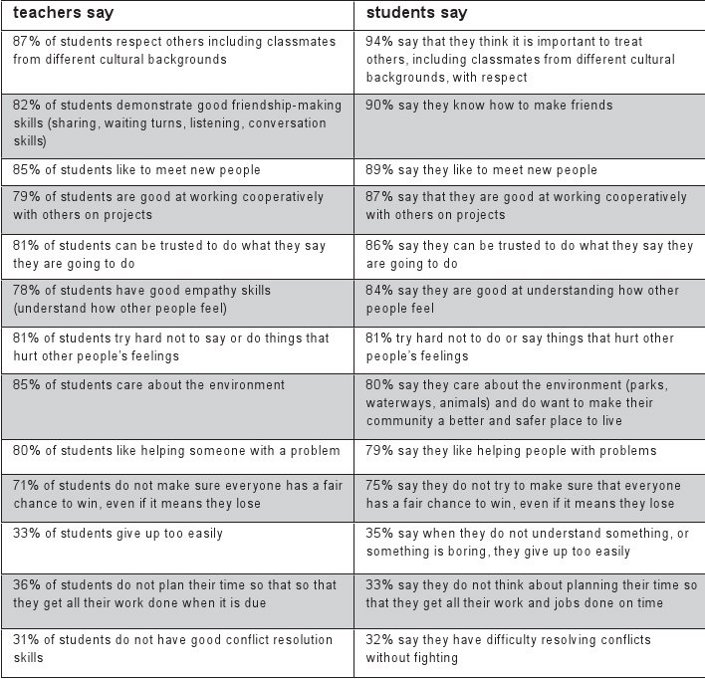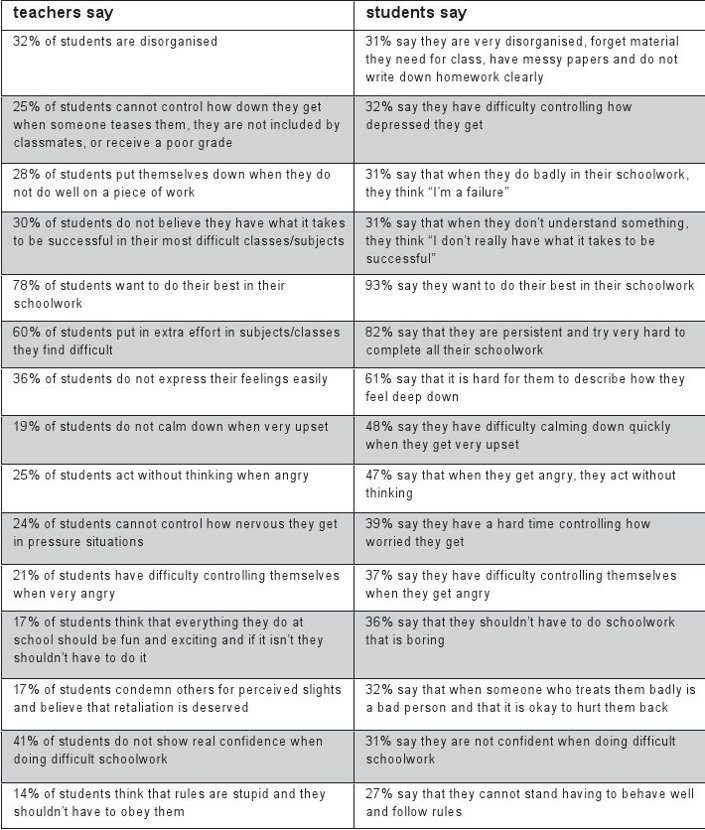Australian Scolarships Group, published the 16 December 2010.
Excerpts and findings from the ASG Student Social and Emotional Health Report for media, parents, educators and the community.
The Australian Scholarships Group (ASG) has commissioned and funded the ASG Student Social and Emotional Health Report as part of its ongoing contribution to supporting children’s education. The Report makes a valuable contribution to the expansion of collective knowledge on the topic of student social and emotional health.
International researcher Professor Michael E Bernard, from the Faculty of Education, University of Melbourne, co-authored the report in conjunction with Andrew Stephanou and Daniel Urbach from the Australian Council for Educational Research (ACER).
The Report’s name reflects ASG’s holistic approach to supporting children’s education and the range of programs it has initiated within the community to achieve this aim.
Within this information and the body of the ASG Student Social and Emotional Health Report, the authors use the term “Social and Emotional Well-being” as a synonym for the term “Social and Emotional Health”.
The ASG Student Social and Emotional Health Report unveils groundbreaking findings into the social and emotional well-being of more than 10,000 Australian students from Prep through to Year 12, as perceived by both students and their teachers.
The findings show that social and emotional well-being of young people is a product of internal factors, such as resilience, learning capabilities, and social skills and values, and the external influences of school, home and the community.
Thanks to this research, the social and emotional health of students can not only be described, but also the factors that contribute to strong social and emotional health can be identified.
The ASG Student Social and Emotional Health Report describes the methodology, key findings, recommendations and actions that parents, schools, and the community can undertake to help improve student social and emotional health.
The complete ASG Student Social and Emotional Health Report and a range of additional information is available from the Australian Scholarships Group website at: www.asg.com.au/socialemotional or can be sent to you on request, please phone ASG’s Corporate Communications on 03 9276 7775.
Student social and emotional health is an important area of growing focus within the community, government and educational sectors. Social and emotional well-being is establishing itself as a permanent fixture rather than a transitory blip on the radar screen of education.
At federal, state and school levels, student well-being policies are being formulated and funding is being provided to promote positive emotional and social outcomes for all students. Schools are increasingly being held responsible for putting in place plans, programs and practices to promote positive student social and emotional health and to prevent problems of poor mental health.
Children and young people with a positive state of social and emotional health are more likely to successfully meet the physical, intellectual and social changes required through childhood and adolescence.
Ongoing support of the social and emotional health of young people is vitally important, especially in the secondary years of schooling when the focus tends to be on academic achievement and where the influence of adults wanes and peer group influence grows.
A series of recommendations is outlined in the ASG Student Social and Emotional Health Report that addresses policies, programs and practices for improving the social and emotional health of all
students.
The definition of student social and emotional health used in the ASG Student Social and Emotional Health Report is based on current research that indicates there are two distinct dimensions of student social and emotional well-being; one a positive one, the other, a negative one.
Students who have positive social and emotional well-being are likely to display the following social, emotional, behavioural and learning indicators.
Presence of Positive Indicators of Social and Emotional Well-being:
The young person generally appears to …
Absence of Negative Indicators of Social and Emotional Well-being:
The young person generally does not appear to...
Factors that Contribute to Student Social and Emotional Well-being
As indicated in the Report, student social and emotional well-being is influenced by their environment as well as their internal social emotional characteristics.
The Report indicates the following “Environmental” factors that exert a positive influence on student social and emotional well-being:
The Social and Emotional factors that strongly influence their well-being include:
Children and young people with a positive state of social and emotional well-being are more likely to successfully meet the physical, intellectual and social changes required through childhood and adolescence. As such, it is important for information to be made available to schools (and educational policy makers) on the extent of positive social and emotional well-being of groups of students. Such information will enable resources and programs to be allocated in areas of greatest need.
Until recently, there have been few if any measures of the social and emotional well-being of young people. The ACER Social and Emotional Well-Being Surveys developed by Professor Michael Bernard were used
to provide data on the social and emotional health of young people as contained in the Report.
What Have We Learned About Student Social and Emotional Well-being?
A continuum of social and emotional well-being emerges from this study .Six levels of student social and emotional well-being have been identified.
Percentages of Students in Sample at Different Levels of Social and Emotional Well-being

What have We Learned About Students with High Levels of Social and Emotional Well-being?
Students with high levels (high, very high, highest) of social and emotional well-being display across these levels increasingly fewer negative indicators of social and emotional well-being and increasingly more positive indicators.
They display increasing degrees of resilience, positive social orientation and positive work orientation. They also perceive increasing high levels of positive interactions with adults, peers and youth-oriented programs in their homes, schools and community.
What have We Learned About Students with Low Levels of social and emotional well-being?
Students with low levels (low, very low, lowest) of social and emotional well-being display across these levels increasingly greater numbers of negative indicators of social and emotional well-being and increasingly fewer positive indicators. They display decreasing degrees of resilience, positive social orientation and positive work orientation.
They also perceive across the low levels decreasing positive interactions with adults, peers and youth-oriented programs in their homes, schools and community.
Important Finding 1:
Large percentages of students experience different social and emotional difficulties.
Important Finding 2:
Social and emotional health decreases from primary to secondary school.
The percentage of students in the sample with higher levels of social and emotional well-being does not increase with age/years of schooling. Data indicate that in secondary schools, on average, the
number of students who have higher levels of social and emotional well-being decreases with years of schooling, whereas the number in lower years increases with years of schooling.
Important Finding 3:
Six levels of student social and emotional well-being identified from highest to lowest.
Six different levels of student social and emotional well-being have been identified as a result of a Rasch analysis of the ACER surveys and labelled: Lowest, Very low, Low, High, Very high, Highest.
Important Finding 4:
Students with low levels of social and emotional well-being found to have multiple challenges.
Students with high levels of social and emotional well-being have many inner and external assets.
Students with lower levels of social and emotional well-being are likely to experience many negative emotions and behaviours (feeling down, stress, under-achievement, bullying), as well as few positive emotions and behaviours (getting along with teachers, volunteering).
They are likely to demonstrate few social and emotional capabilities (low resilience, learning capabilities and social skills and values) as well as to perceive few positive actions of adults, peers and youth-oriented programs in their schools, homes and communities.
Students with higher levels of social and emotional well-being are likely to experience fewer negative emotions and behaviours and a greater number of positive emotions and behaviours.
They are likely to demonstrate many social and emotional capabilities as well as to perceive many positive actions of adults, peers and youth-oriented programs in their schools, homes and communities.
Important Finding 5:
Students at different levels of social and emotional well-being with the same childhood problem may require different types of interventions
Students at all levels of social and emotional well-being demonstrate different childhood problems (bullying, getting into trouble, feeling stressed, feeling down, under-achievement).
Therefore, important to identify the level of social and emotional well-being of a student with a childhood problem in order to know what to do.
Important Finding 6:
Teachers perceive student social and emotional well-being differently from the way students perceive themselves.
Consistent differences are found in the ways that students view their social and emotional characteristics in comparison with the ways in which teachers perceive them. Teachers may be unaware of the extent of the emotional difficulties of students (anxiety, stress, anger), rating students as possessing lower levels while students say they possess higher levels.
Important Finding 7:
Specific social-emotional characteristics contribute larger amounts to overall student social and emotional well-being.
Student Social and Emotional Well-being Survey:
Teacher Social and Emotional Well-being Survey:
Important Finding 8:
Girls’ overall social and emotional well-being higher than boys.
In both student and teacher surveys, girls display, in comparison with boys, significantly higher levels of social and emotional well-being. Significant gender differences were obtained on individual social and
emotional characteristics (boys higher in getting into trouble a lot, not being able to stand following rules; girls higher in helping classmates who seem unhappy, finding someone to talk with to calm down,
organisation, having friends who try to do their best in schoolwork).
Important Finding 9:
Students from economically disadvantaged backgrounds shows delays in some of their social and emotional characteristics.
According to the results obtained from teacher perceptions of students’ social and emotional characteristics, students from the highest 10% socio-economic level were rated significantly higher than students from the lowest 25% socio-economic level on a number of characteristics (raises hand to answer a difficult question, does not require an adult present to calm down, participates in many activities, achieves to potential in schoolwork).
Important Finding 10:
Social and emotional competence is a vital contributor to student social and emotional well-being.
The data clearly indicate that the social and emotional competence of students is a very important contributor to student social and emotional well-being with students at higher levels of social and emotional well-being displaying well-developed social and emotional capabilities in three domains:
Students at lower levels of social and emotional well-being demonstrate delays across the three domains.
Important Finding 11:
(i) Evidence of positive parenting found in children with higher levels of social and emotional well-being. For children with lower levels of social and emotional well-being, the parent report card is not as good, with children reporting that their parents less frequently engage in positive parenting practices.
(ii) The actions of parents that contribute most to high levels of children’s social and emotional well-being have been identified.
The parenting actions that contribute most to student social and emotional well-being include:
Important Finding 12:
(i) Teachers make a difference to student social and emotional well-being.
Teachers of students with higher levels of social and emotional well-being receive “good marks” from students.
Students with low levels of social and emotional well-being do not rate their teachers as highly.
(ii) The actions of teachers that contribute most to high levels of student social and emotional well-being have been identified.
The most important actions that teachers take that contribute to overall social and emotional well-being include:
(iii) A majority of students at the lowest level of social and emotional well-being perceive relatively few positive actions of teachers.
They do perceive that teachers:
They do not perceive that their teachers:
Important Finding 13:
The community contributes to student social and emotional well-being.
It is evident that the actions of adults, peers and the existence of youth-oriented programs in the community are an additional context for understanding student social and emotional well-being.
Students with low levels of social and emotional well-being do not perceive many connections with positive adults, peers and programs outside.
Comparisons
A comparison of teacher perceptions with student self-perceptions of student social and emotional well-being illustrates similarities in specific indicators of student social and emotional well-being. It can be seen that students rate themselves higher in many negative emotional indicators (lose temper, worry, stress) than teachers rate students. Teachers rate the incidence of under-achievement higher in students than do students. Overall, students and teachers differ markedly from each other on about half of the different positive and negative indicators of student social and emotional well-being.

A similar set of comparisons concerning a selection of indicators of student social and emotional capabilities associated with Resilience, Positive Social Orientation and a Positive Work Orientation is presented below. It will be seen that the greatest agreement between students and teachers is in their perception of student capabilities and behaviour in the social domain. In terms of Resilience, teachers rate students higher in their ability to manage their emotions than do students. In the area of Positive Work Orientation, students and teachers are close to agreement in their perceptions of students’ work disorganisation and pessimism when tackling difficult work.
However, teachers rate students considerately lower in work confidence, effort, and students wanting to do their best in their schoolwork, than students rate themselves. Overall, there are more agreements in perceptions of teachers and students concerning different social and emotional capabilities than differences.


For governments, parents, schools and communities
» Document(s) to download
![]() The State of Student Social and Emotional Health
The State of Student Social and Emotional Health
. Document PDF - 681.7 kb